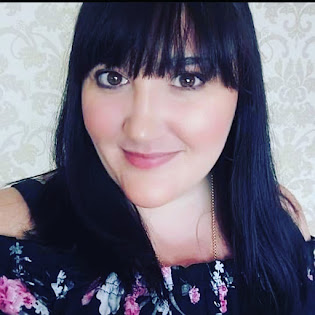
Title | The Silk Weaver
Author | Liz Trenow
Publisher | Pan Macmillan
Purchase | Amazon
Book Summary
A novel of illicit romance set
against the world of the silk trade in London
Anna Butterfield moves from her Suffolk country home to her uncle's
house in London, to be introduced to society. A chance encounter with a local
silk weaver, French immigrant Henri, throws her from her privileged upbringing
to the darker, dangerous world of London's silk trade. Henri is working on his
'master piece' to make his name as a master silk weaver; Anna, meanwhile, is
struggling against the constraints of her family and longing to become an
artist. Henri realizes that Anna's designs could lift his work above the
ordinary, and give them both an opportunity for freedom…
This is a charming story of illicit romance, set against the world of
the burgeoning silk trade in eighteenth-century Spitalfields - a time of
religious persecution, mass migration, racial tension and wage riots, and very
different ideas of what was considered 'proper' for women.
Today I am very happy to be handing my blog over to Liz Trenow for a short Q&A. I am sure you will find her answers fascinating, and even more so be urged to purchase a copy of the book for yourself and devour every page. Enjoy!
1. Please tell me a little about yourself, Liz
I worked as a journalist with regional and national newspapers and on BBC radio and television news, before turning my hand to fiction rather late in life!
I was born and brought up in Sudbury, Suffolk next to the mill which is the oldest silk weaving company in Britain and one of just three still operating today. I still live in East Anglia with my artist husband, we have two grown up daughters and, just this year, a granddaughter!
My first three books have also been published in a number of other countries and in translation: The Last Telegram, The Forgotten Seamstress (a New York Times bestseller) and The Poppy Factory.
2. Where did you get the inspiration for the characters in your novel?
My heroine, Anna, is inspired by the eminent silk designer, Anna Maria Garthwaite, who lived and worked in a house just a few doors away from where my family’s silk weaving business started in the 1700s. I was intrigued to think that they must have known and worked with her.
Anna Maria was one of the most celebrated textile designers of the eighteenth century, her silks were worn by royalty and nearly a thousand of her designs are in the Victoria & Albert Museum in London. Yet no-one knows how she learned her craft or how an unmarried middle-aged woman managed to develop such a successful business in a male dominated industry. It is this mystery that sparked the idea for the novel.
The boy she falls in love with, Henri, is a Huguenot (Protestant) whose family fled persecution in France by the Catholic king. Many Huguenots made perilous journeys in small boats across the Channel to reach safety in England. I became fascinated by the parallels with what is happening to refugees today and wanted to highlight them in this novel.
3. The Silk Weaver is set in in 1760s Spitalfields - are there any remaining features from that time left in the area?
It’s a wonderful area, still full of history. Many of the houses are just as they would have been back then and although the market building was demolished and replaced with a modern structure a few years ago, the wonderful Christ Church still stands proud over the landscape. The French Church Henri went to is still there, too. Since then, it has been a synagogue and then a mosque, reflecting the different waves of immigrants the area has been home to.
4. How did you go about researching the novel?
I did masses of research, especially as before this I knew very little about the 18th century, and I loved every moment of it.
I spent nearly a year visiting museums, art galleries, libraries and Georgian houses, as well as reading very widely. Of course I also spent a lot of time in Spitalfields itself, at Christ Church (where my ancestors were baptised, married and buried) and other venues and museums in the area. It was also a great excuse to visit Georgian towns like Bath again, to get my head into the era.
For a whole year I read nothing but books about 18th century London and novels either written in, or set in, the period!
5. If you could be one fictional character who would you choose?
Superwoman / man!
I’d love to be able to fly, save people, sort out the world’s problems, and come back to my job as a journalist after lunch.
Liz Trenow is the author of three previous historical novels: The Last Telegram, The Forgotten Seamstress and The Poppy Factory. Liz's family have been silk weavers for nearly three hundred years, and she grew up in the house next to the mill in Suffolk, England, which still operates today, weaving for top-end fashion houses and royal commissions. This unique history inspired her first two novels, and this, her fourth novel.
Liz is a former journalist who spent fifteen years on regional and national newspapers, and on BBC radio and television news, before turning her hand to fiction. She lives in East Anglia, UK, with her artist husband, and they have two grown-up daughter.












Post a Comment